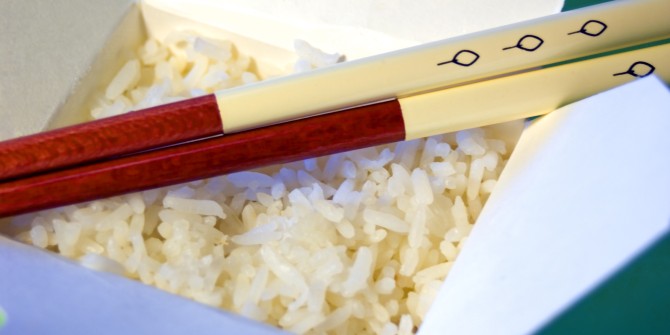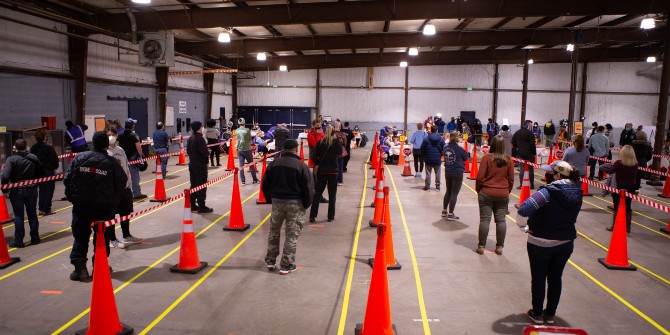TV news bulletins have used footage from inside hospitals that are treating patients afflicted by coronavirus. Marina Morani, Maria Kyriakidou, Nikki Soo and Stephen Cushion (University of Cardiff) look at the ethical issues raised by these reports, and what the public thinks of them.
The public have largely turned to broadcast media for trusted and reliable information since the outbreak of COVID-19. With fake news and conspiracy theories spreading rapidly online, news organisations are under unprecedented pressure to provide accurate and informative coverage.

At the same time, reporting the unpredictable course of a novel virus that has led to so many deaths and caused widespread fear and anxiety among the public remains highly challenging for journalists. There is the particular question of how to show the life-threatening health effects on those affected while also safeguarding the mental health of media workers. Broadcasters already have limited resources and face barriers of access to report from inside hospitals. Yet media organisations have urged hospitals to open their doors to cameras because they believe there is a public demand for this kind of coverage. Governments that restrict hospital access can limit public understanding of the severity of the pandemic.
Our study of UK television news coverage of COVID-19 showed broadcasters have regularly reported from the frontline of NHS operations in intensive care units (ICUs). Along with an ongoing study of people’s knowledge and understanding of media coverage, our analysis highlights the informative value of in-hospital reporting while also raising important questions about its impact on healthcare workers and operational safety, patient privacy, and the fine editorial line between news reporting and intrusive spectacle.
TV coverage as a warning
Our study examined the main UK evening TV news bulletins – BBC News at Ten, ITV News at Ten, Sky News at Ten, Channel 5 at 5pm and Channel 4 News – between 13-19 April, and found 11 stories filmed inside hospitals, including two international reports.
We found healthcare workers were usually the face of the stories guiding the reporter through the hospital wards. They were mostly filmed working long hours in full personal protective equipment while adapting to transformed hospital settings and new safety guidelines. Their professionalism, dedication and teamwork across a range of duties were emphasised by journalists. But they were also shown as individuals, revealing their emotions and concerns over patients, their family, and their personal safety.
Several news stories involved healthcare workers documenting their shifts through a video diary. This provided a personal insight into the daily lives of critical NHS workers, going beyond statistics about deaths and reported cases that typically feature at the beginning of news bulletins.
We’re very proud of @AlicePallot who was on @BBCEngland earlier today! If you missed it you can watch it here! ‘We don’t look after numbers or statistics, we look after people’ @bbchealth @BBCSouthNews @UHSFT #Covid_19 #ICU #Nurse #UHS pic.twitter.com/wYjVhoQll8
— UHS Critical Care (@UHS_CritCare) April 18, 2020
Coverage often included nurses and doctors making direct pleas to the public about observing social distancing and staying safe during the lockdown. This was underlined by reporters who revealed that the reason for filming inside a hospital was to act as a deterrent, stressing the importance for people to stay at home.
For example, introducing a report filmed inside Epsom and St Helier hospitals, Channel 4’s health and social care correspondent said:
Let’s get this straight: the reason that we were allowed onto that intensive care unit to film in the first place is because it serves as a warning, a real warning that you simply do not want this to happen to you.
Several news stories also gave a voice to patients at different stages of treatment or recovery, granting them the opportunity to share their reflections and gratitude to carers.
Two reports were filmed in international hospitals. The BBC on 15 April showed a video diary filmed by a doctor during her shift in a hospital in Brooklyn, where the spread of the virus had started to slow. ITV was granted access to the Wuhan hospital at the centre of the global outbreak in China when it was discharging its last five patients. The reports provided an opportunity to reflect on the intensity of the past months and emotional burden on healthcare workers as their fight against the pandemic is coming to an end. The reports hinted at the future journey and processes that the UK is expected to follow in the course of its own treatment of the pandemic.
Information or spectacle?
In addition to our analysis of TV news, we are regularly asking just under 200 participants to share their views about how the media are reporting the pandemic. This qualitative study of a representative mix of the UK population asked respondents between 7-10 May for their thoughts on coverage about COVID-19 patients and healthcare workers inside hospitals.
Our findings revealed that participants were overwhelmingly in favour of such coverage, as it showed the human impact of the virus and how people were emotionally affected by it. As one participant put it, reporting inside hospitals helps convey “the real raw emotions of staff and patients”. A number of responses highlighted that in-hospital reporting acted as a deterrent to breaking lockdown rules and that it helped people understand “how dangerous coronavirus is, and the sacrifices frontline staff are making to look after patients”.
While most participants would welcome more inside hospital coverage of COVID-19 including more testimonies from recovered patients, some voiced strong objections to reporting at the frontline. A variety of reasons were given, including privacy and ethical concerns for vulnerable patients who cannot provide consent.
Another critical point was the presence of the camera crew inside the intensive ward, which was perceived by some respondents as being potentially disruptive to medical staff and compromising safety. A small number of responses challenged the informative value of in-hospital reporting as it exploited suffering for what they saw as a media spectacle. One participant commented:
It is unnecessary and increases the risk of spreading the virus to people that did not need to come into contact with patients suffering from this illness. I think this has been done for shock value and ratings only and is exploitative of the patients and their families. None of the information in this report required the reporters to visit an actual hospital ward.
Finally, many participants pointed out audiences might be emotionally distressed by inside hospital footage and raised concerns that such images would affect viewers already experiencing mental health issues or anxiety. At the same time, a few raised concerns that these reports might start to ‘merge together’, contributing to a desensitisation to human suffering and a wider compassion fatigue among the public.
Striking the right balance
Overall, the responses in our study reveal the difficulty in striking an editorial balance between transparent reporting at the frontline of hospitals, while not causing too much emotional distress among viewers, healthcare staff and reporters. However, most respondents recognised the value of reporting from inside hospitals, in order to convey the human suffering of the pandemic and to encourage people to observe social distancing guidelines. This represents an important public service if broadcasters want to be transparent about the severity of the health crisis.
This post represents the views of the authors and not those of the COVID-19 blog, nor LSE.





